A project manager is a common position that is available with a lot of businesses these days. A product owner is often used in IT companies instead of a project manager. What are the differences between product owner vs project manager and what unique purpose does each role fill?
Whether you are a job-seeker who wants to choose the right career path based on your attitude and personality or you are a business entity interested in hiring an individual to fill a vacant position, this article is for you.
Fitness trackers: Fitbit announces Fitbit Charge, Fitbit Charge HR and Fitbit Surge – Assodigitale where to get anavar and from caserta the vice champion of fitness
It covers in detail the differences between a product owner and a project manager and how and when these roles make more sense.
If you’re interested in learning more via video, then watch below. Otherwise, skip ahead.
Let’s get to the basics.
Product Owner vs Project Owner: Comparison Table
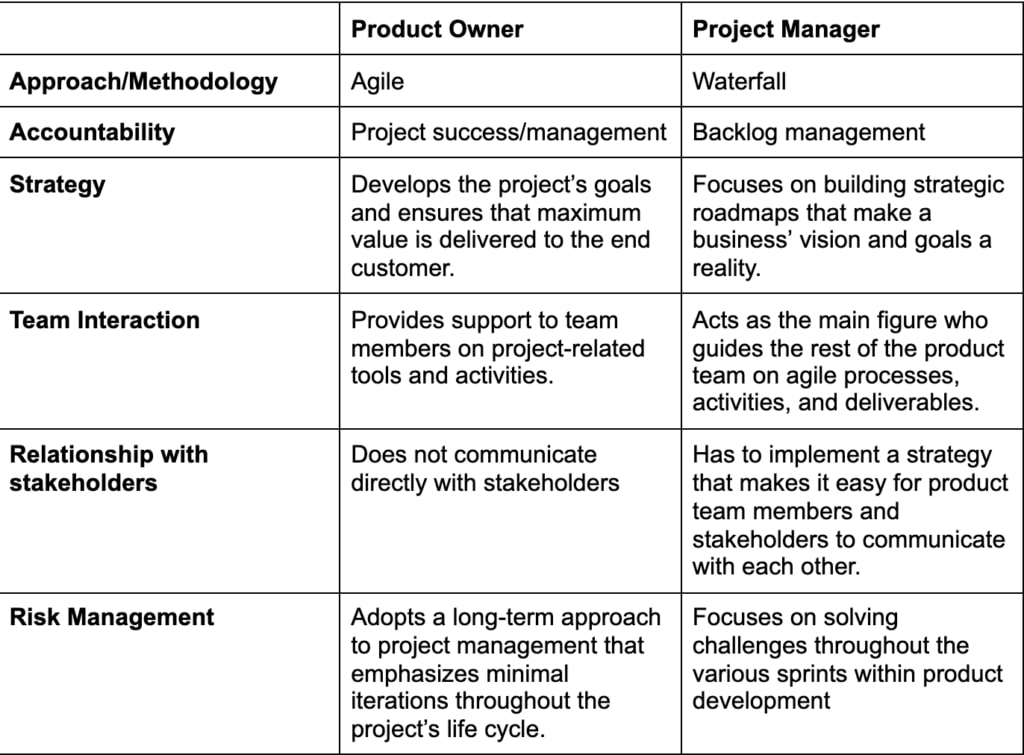
Product Owner vs Project Manager Table of Comparison
What is a Product Owner?
A product owner (PO) role is closely linked to Scrum development and the agile approach.
A scrum or agile product owner is responsible for maximizing the value of the product result from the Scrum team. They own the product completely and are responsible for value optimization and customer satisfaction.
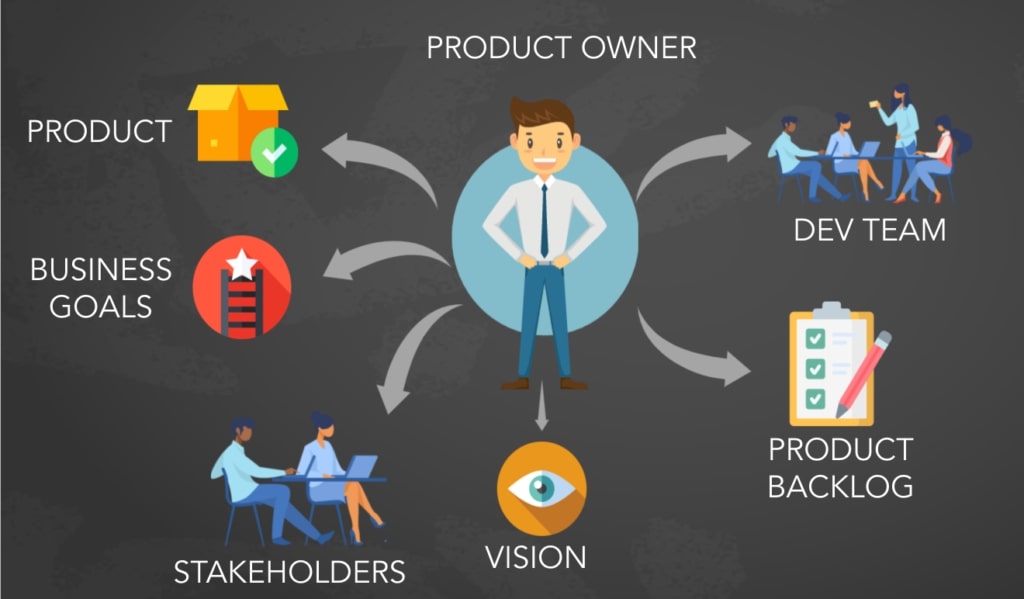
In both Scrum and agile, the responsibilities of product owners remain the same. Value maximization is the sole responsibility of the product owner and they do so by making the right choices in terms of what to develop and when to develop. Creating, prioritizing, and managing backlog items is what a product owner does on a daily basis.
The scrum team is responsible for working on the backlog items as instructed. They can communicate and discuss issues and progress with the product owner but the team isn’t held accountable.
It’s important to add that a product owner is different from a certified scrum master. Scrum masters are professional coaches who motivate the development team so that they can meet the demands of the product owner. Usually, Scrum masters have one or more Scrum master certifications that qualify them to be a coach within the development team.
Product owners, on the other hand, are concerned with product strategy, goal, development, and backlog management are the core responsibilities of the product owner and they are held responsible for the same.
Product Owner Roles and Responsibilities
A product owner manages a lot of things that are all aimed at maximizing the product value. The major tasks include:
- Defining product goals and objectives and communicating these goals to the scrum team and other stakeholders
- Practicing product backlog management, ordering backlog items, and ensuring items are prioritized based on their importance
- Communicating product backlog items to the scrum team and ensuring they understand and know what they’re supposed to do
- Ensuring the product backlog is understood by all the developers and there aren’t any ambiguities
- Regularly communicating with the scrum team members, the scrum master, development teams, and other stakeholders
- Arrange, manage, and provide resources (of all types) for the project and product development
- Stakeholder management involves keeping all the stakeholders on board. It involves tasks like inviting stakeholders to sprint review, discussing and communicating targets and goals, sharing user stories, and making information easy to understand for the stakeholders.
The product owner is the person who is responsible and accountable for the agile project. If anything goes wrong, they will be held responsible for it. The product owner is in the decision-making position and the success or failure of the product lies in the decisions and actions taken by them.
If you’re interested in learning what it takes to become a great product owner, check out our Product Owner Certification course. You’ll get to develop a solid foundation in agile principles, stakeholder management, customer feedback management, and so much more.
![]()
What is a Project Manager?
A project manager (PM) is an expert who manages a specific project. The planning, organizing, leading, executing, controlling, and closing projects is the main goal of a PM. A project manager oversees all of the tasks associated with the role and sets the stage for the project’s success.
PRINCE2 defines a project manager as:
“The Project Manager manages a project on a day-to-day basis and is the only one with this day-to-day focus on the project. As a result, this role can never be shared. The Project Manager runs the project on behalf of the Project Board within specified constraints and liaises throughout the project with the Project Board and Project Assurance.”
So, a project manager oversees project plans on a day-to-day basis and ensures both vertical and horizontal communication and collaboration. Just like a PO, a PM owns the project and is responsible and accountable for its success or failure.
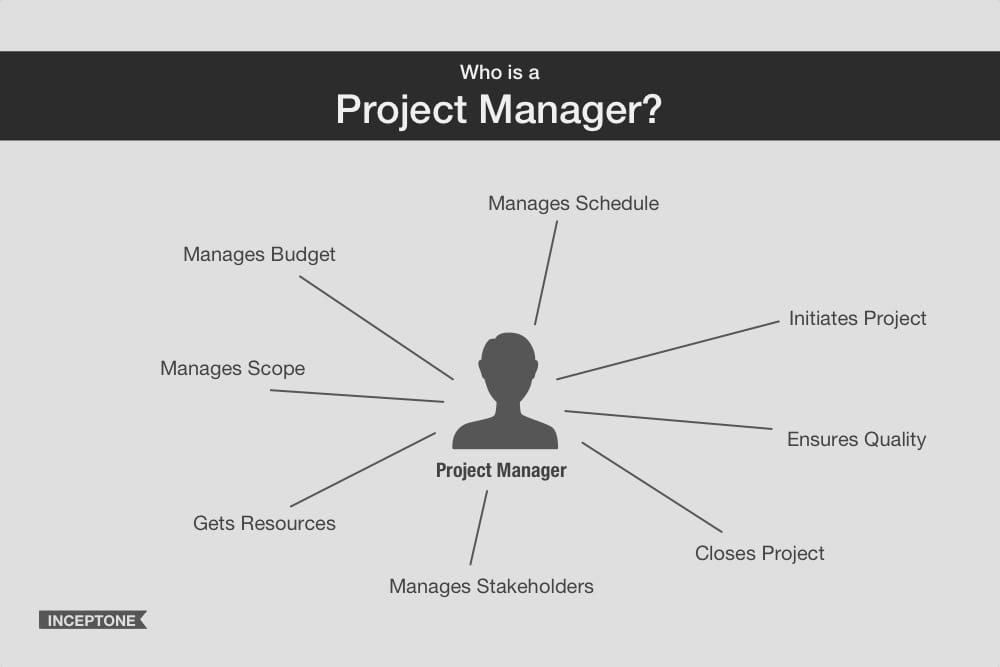
Businesses of all sizes rely heavily on project managers for the success of various projects. The success of project management is considered critical by 97% of businesses and project success is considered to be an organizational success. However, KPMG found that 70% of businesses have at least one project failure in 12 months.
This shows how critical a PM’s role is in any organization as the success of the project relies solely on him/her.
Project Managers Roles and Responsibilities
The project manager works on a lot of things on a daily basis as they are leading the full project. The scope of work and tasks depends on the complexity and stage of the project.
For example, a small project in a mid-sized clothing retailer will be less complicated and easy to manage as compared to a large project in a multinational company that operates in 100+ countries.
Here is a how a day in the life of a project manager looks like:
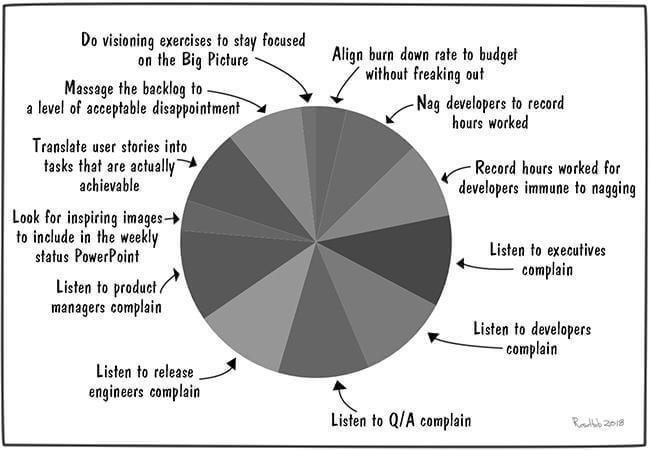
A PM performs all of the following tasks:
- Defining project objectives and goals
- Identifying project details and defining its outline
- Identifying stakeholders
- Developing the complete project plan, defining its scope, and creating a work breakdown structure
- Planning, defining, creating, and scheduling key activities and tasks
- Identifying and developing task duration and developing Gantt charts
- Cost estimation, budgeting, and turnaround time of the project
- Planning and identifying project resources
- Communicating project requirements to the stakeholders
- Executing the project and regularly monitoring and controlling it
- Managing project team and constantly communicating with them to ensure timely completion of the tasks and projects
- Controlling project progress by actively monitoring everything
- Finalizing and closing all project phases and tasks
- Ensuring project finalization and deliverables.
Product Owner vs Project Manager
Both the product owner and project manager work on a specific project, they’re responsible and accountable for it, and they’re in the decision-making position. But this doesn’t mean these two roles are interchangeable. These are similar but different roles.
What are the key differences between the two roles?
Let’s figure it out.
Philosophy
The fundamental difference between the two roles is based on their origins and the philosophies that govern them.
The origin of a product owner is fairly new as it is rooted in the agile methodology. Later, it was more clearly defined in the Scrum approach with clear roles and responsibilities. Flexibility and adaptability are the basics that define the philosophy of the product owner role.
A product owner works in a constantly changing environment. They need to learn, unlearn, and adapt quickly based on feedback on the software development process.
A product owner won’t be able to perform well if they aren’t flexible and proactive.
The project manager role originated from several fields including civil construction, military, and engineering. It is a much older role than PO and therefore, the project management field and the PM role are fairly established.
A PM operates in a structured environment following a scientific approach. They use the basic management roles for project completion. The project management tools that are used today also follow a structured approach
In fact, most of the PMs operate in closed, well-defined, and organized systems making their scope quite different from than PO. A PM doesn’t necessarily have to be flexible and adaptable rather they must be a good manager.
Product Vision
The way how product vision is built and executed is different for both these roles.
A scrum product owner creates product vision. Identifying product goals, objectives, and defining its vision are the core responsibilities of a PO. The stakeholders give full authority to the PO who is then responsible for product development and value optimization.
A PM, on the other hand, doesn’t build a vision rather they are responsible for the execution of the vision that’s developed by the organization. The PM crafts a plan to complete the project in a timely manner with a focus on effective resource allocation and utilization.
While a product owner owns the product completely in all its aspects, a project manager doesn’t have much control over the project’s vision and concept.
They have to do the project without altering its core vision while a PO can alter the vision of the product whenever required.
Communication
While communication skills are important for team members in any organization, product owners and project managers use those skills differently. Both roles have a different approach to communication and being part of a team.
A product owner works as part of the software development team. The sprint review and retrospective are perfect examples of the importance of communication and collaboration:
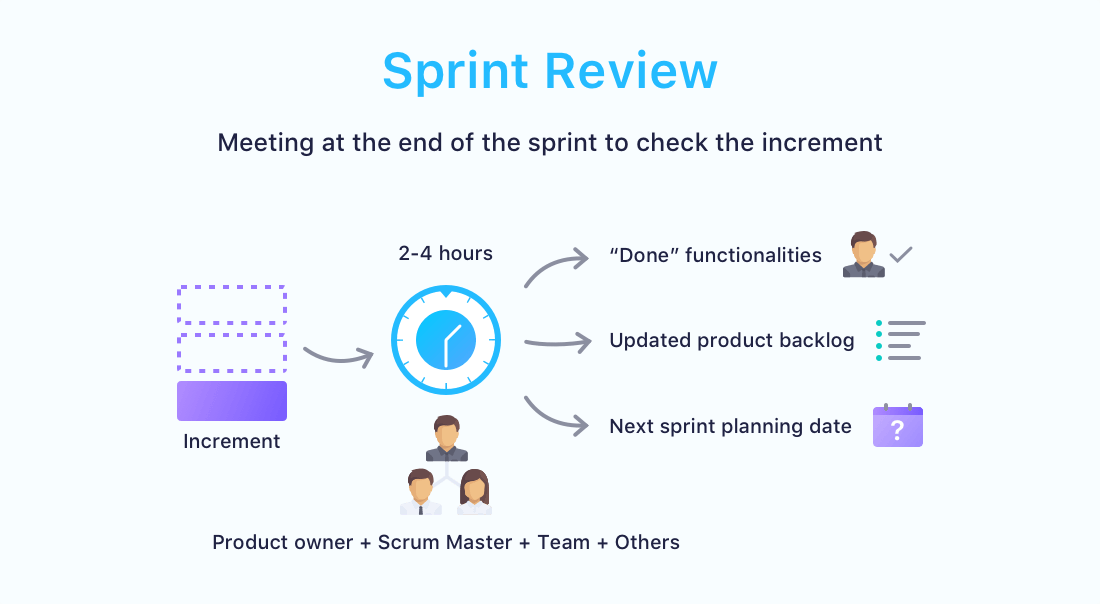
The PO stays constantly in contact with the development team and keeps discussing and elaborating on what they should be building and how it needs to be built.
Communication is also essential for feedback that improves product value. Similarly, explaining backlog items and clearing the scrum team’s ambiguities on time will ensure timely delivery.
The project manager doesn’t rely on communication and collaboration for project success.
Everything is systematic and documented, and everyone knows what they’re supposed to do, when they’ll do it, and how to do it.
Here is an example of a basic project example with clearly defined tasks and activities:
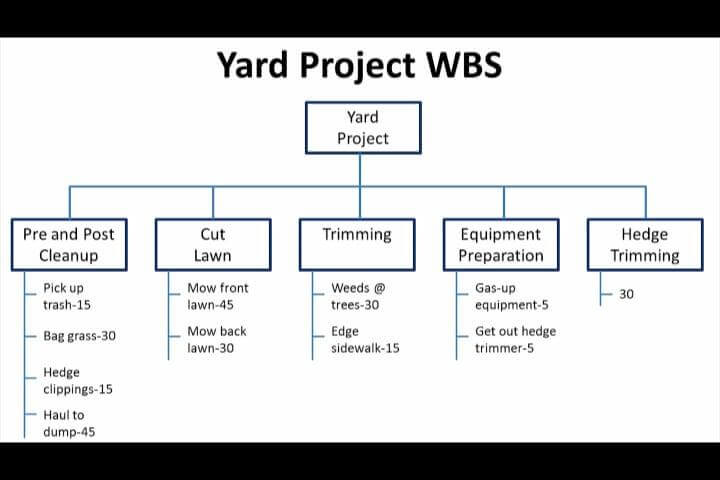
Once the details are distributed, the PM only needs to monitor if everything is moving as expected. He interferes in case of an issue or ambiguities. Constant communication daily isn’t necessary.
Also, the PM isn’t part of the team rather he oversees the project as a manager. Depending on the management style of the PM, they can choose to be authoritative or supportive.
The way how a PM interacts with his/her team members is more related to the PM’s management style and personal preference rather than a role-based requirement like a PO.
Decision-Making
Both PO and PM are at the decision-making stage but the way they make decisions is quite different.
A product owner makes all the decisions related to the product they own based on the feedback from customers, stakeholders, and the development team. A PO must be a great business analyst to make the right decisions.
For example, what product feature to develop first and which one to delay isn’t a simple decision to make. The PO needs to analyze several aspects such as client requirements, development team capabilities, market requirements, etc.
The project manager doesn’t own the project, rather they act as a manager who will plan and execute the project so the scope of decision-making is limited as compared to a PO. A PM uses reporting, technical analysis, and data for decision-making.
Since the environment is somewhat rigid, a PM can make decisions quickly based on the initial plan and evaluation.
Product Owner vs Project Manager: Which One is Better?
Despite all the differences, the product owner and project manager have unique characteristics that can’t be ignored. Depending on the type of organization, project at hand, and its scope, you can decide which one is better.
A product owner comes with a vision and agile approach to bring your blur product to life. With his flexible approach, vision, and decision-making abilities, a PO role is best for projects that have unclear scope and requirements.
A project manager is ideal for well-defined and structured projects that need to be completed with extreme precision. A PM knows how to plan, execute, control, and deliver a project on time with scientific management, technical decision-making, and vision execution approach.
